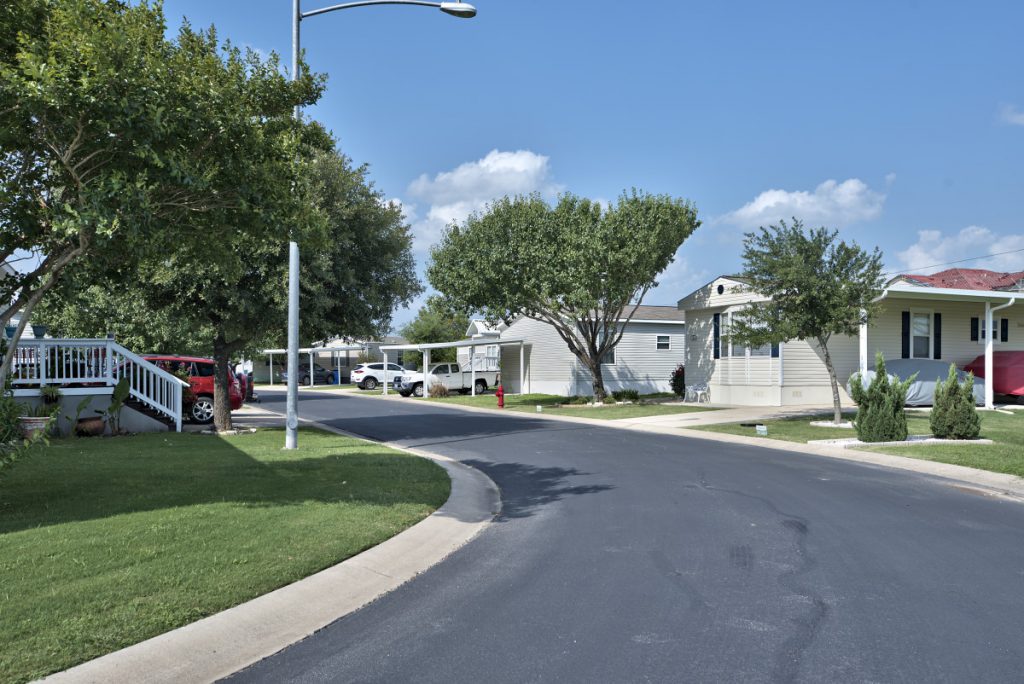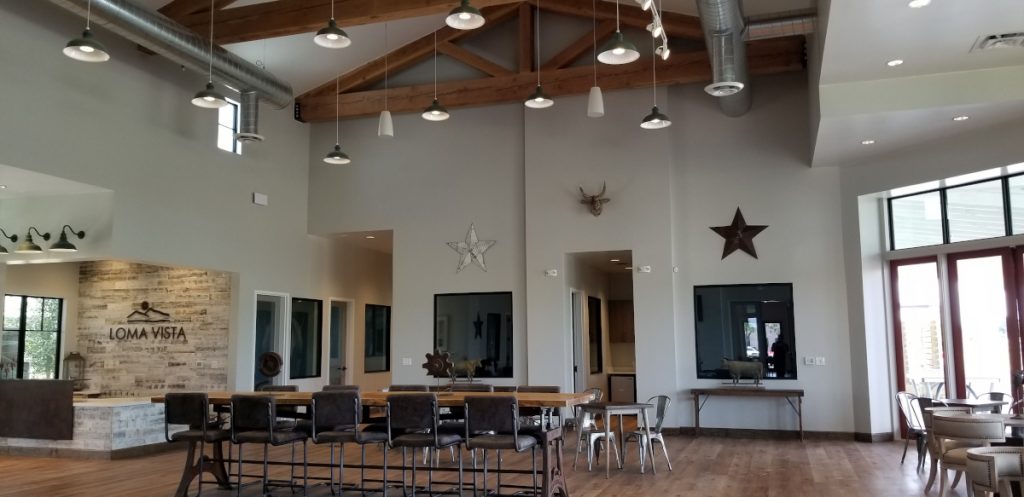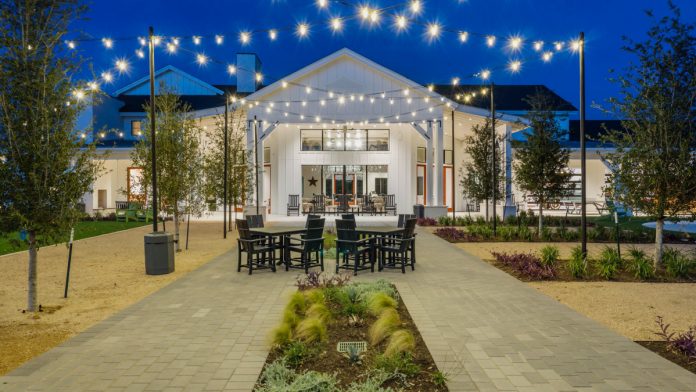Buckle your Tesla seatbelts, because manufactured housing and land-lease communities are getting ready to go on a fast-paced, exciting ride.
When Scott Roberts asked me if I followed Elon Musk on Twitter, I was embarrassed to say that I didn’t, but I sure do now. Roberts shared with me some of Musk’s latest posts: “Urgent need to build more housing in greater Austin area!” “Over 10,000 people are needed for Giga Texas just through 2022!” And “High School Grads: You do not have to have a college degree to work for Tesla straight out of high school. Tesla is recruiting high school students who can graduate high school and start a career at Tesla while continuing their education.”
What does this have to do with manufactured housing?
Everything.
These new entries into the workforce are our potential new home buyers, and for Roberts, Tesla GigaTexas is an easy five-minute drive from his Oak Ranch Community and nine minutes from Loma Vista, properties operated by Roberts Communities.

As much as things change, they stay the same. We start dreaming about having a home of our own from when we get our first Barbie Dream House or a treehouse in the backyard. But in a city like Austin with a median sales price for a site-built home in the suburbs being $344,000 and in the city of Austin, the median list price of a site-built home being $475,000, there is no way the workforce that Tesla is hoping to hire will be able to afford a place to live. An average one-bedroom apartment rents for $1,518 per month.
With prices like this, a home of your own seems out of reach for many.
When Roberts took over the family business in 1998, they were focused on 55+ communities. When he saw an opportunity to buy failed, empty parks and revitalize them, including Oak Ranch in Austin, he wondered why something that is so good for retirees couldn’t be just as good for families.
When Roberts purchased Oak Ranch, there were no homes, and only a shell of a community center. Roberts and his team converted the property from a local eyesore to a thriving, award-winning all-ages community of 491 homesites, all of which are now full. They also decided to build The Reserve, a 55+ community adjoining Oak Ranch with a separate entrance and community center. Roberts shared that filling The Reserve has been a more significant challenge, and to date, 130 of the 160 lots are full.

Roberts said he thinks that we will be seeing more communities where family and 55+ communities exist nearby or side by side but cautions that the boundaries between the two need to be clear to comply with fair housing laws. This includes separate rent rolls, contracts, a fence, and even gates between the two.
The convergence of property types may be a building trend, and it’s one that should come with some “stigma relief” for families and operators alike.
This isn’t only happening in Austin — retirees, active 55+ buyers, and families all are rethinking apartment life or living in a multifamily building in a tight, urban setting.
Land-lease communities can be what so many buyers are looking for; they need to be educated about the value and quality of life that today’s manufactured homes and communities can offer.

From Texas to Florida Affordable Housing is in Demand
Florida is experiencing a different type of boom.
People consider leaving behind their large homes and mortgages with colossal property and state income taxes in other states to move to Florida where they can downsize, do Zoom work from home, if they choose, and enjoy a new quality of life. Now being part of a community where people check in on each other and the term “know whom your neighbor” has a new meaning.
John Hall, President of Newby Management, said that of the 45 communities they currently manage, only four are not 55+ communities, and the residents of their 55+ communities are very protective of that age differentiation. They appreciate the social aspects of the active adult lifestyle and feel more in common with the other residents of their own age range, he said. It used to be that almost every manufactured housing community in Florida had a busy shuffleboard court. Now it’s being complemented in 55+ communities with pickleball, tennis, nature trails, well-appointed fitness facilities, and of course, a pool that preferably is large enough to swim laps in and host water aerobics classes.
But something that the residents refuse to give up is their vintage bingo machines. They are so popular with their retro tubes, lights, and wire cages that Newby Management has found a company to refurbish the ones they already have in their communities. Keeping common areas updated and continually refreshing the landscaping, signage, and look of the community is one of the things that sets a well-managed community apart from the rest.
Both Hall and Roberts agree that a 55+ community can be the easiest and most challenging to manage in various ways, and call for different management styles. Residents tend to have more time on their hands and are happy to tell you where the landscapers missed cutting a lawn section or whose home needs to be power washed. They tend to take much pride in their community and want to be included and informed about decisions that will affect their quality of life. They can be your best sales tools — they want to share their happiness with others.
Let’s face it — a perception that often is necessary to overcome, especially with seniors, is that all communities are owned by giant hedge funds or corporations in the business for quick cash. The prevailing perception, which has been earned only in small corners of the industry, is that homesite fees will rise beyond the residents’ ability to pay. Part of the challenge that we have to take on as an industry is to be better about sharing the real story about many of our community owners and managers (and that industry-wide lot rent increases are only somewhere slightly above 4%).
Even community owners and investment groups are starting to understand that messaging is an essential part of being successful in this industry. Paul Chase and Erick Mulicandov, principles of Iron Horse Properties, make it clear from the start that theirs is a long-term investment and that “we as owners put our head down on the pillow at night and feel good about what we do.”
If what site builders are doing is any indication, we will be seeing many more communities that have different clusters or villages in them with different styles and types of homes that attract different lifestyles and age groups.
Chris Nicely, president at ManuacturedHomes.com, shared that he sees this happening nationwide. Casata is a cluster housing concept that focuses on wrap-around services and lifestyle amenities being built in Austin. It is opening as a lease product for now and uses homes that Skyline Champion Corporation is building. They thought their market would be millennials just graduating from nearby colleges, but on opening day they toured with more than 200 people. More than half of those people ended up being active senior adults, so their marketing strategy may change.
Roberts stressed that flexibility is critical when planning a new community or changing direction on an existing one. He suggested building the initial homes and amenities at the back of the property and building towards the front. Hence, if situations change, there is an opportunity to divide the community and make part of it an all-age offering instead.
With all of these innovations and improvements going on, it seems that the perception of manufactured homes and land-lease communities is going from “only if I have to” to “consumer’s first choice”.
But we have to be the gatekeepers, earn and claim the chance to impress consumers and municipalities, to show what a good investment our homes are, and what a good neighbor our communities will be.
Iron Horse Properties is making a serious commitment to sharing with city and state leaders the new story about factory-built homes, not just buying or building a property and moving into a town. And Roberts stressed that “we want to stay affordable and achievable here. If we lose our direction, we can’t stay affordable to our customers.”










